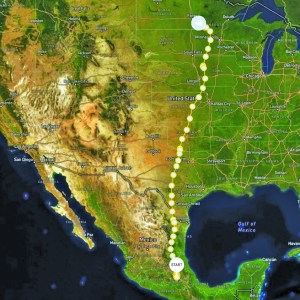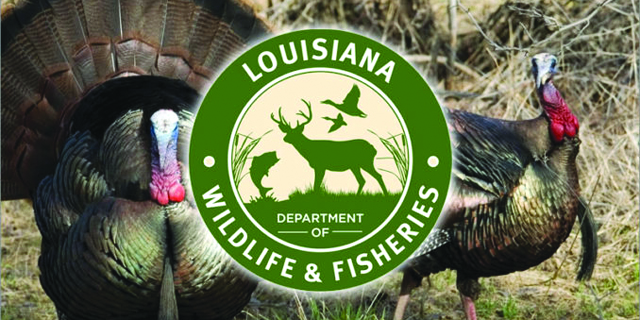Duck hits 94 mph, 11,300 feet on flight back to breeding grounds
Published 11:30 am Tuesday, May 27, 2025

- A northern shoveler tagged and fitted with state-of-the-art technology Jan. 29 by 50 Ducks near Mexico City left the area May 12. Spoonita, as the duck was named, has reached the western side of Minnesota, where she was located May 19. 50DUCKS.COM
’Tis the season to delve into remarkable waterfowl migration adventures, such as a duck flying as fast as 94 mph and logging nearly 2,000 miles in a week, across North America.
Weather has been heating up with more daylight hours south to north nearly every day since late April and early May, a seasonal change that sets off a biological clock in so many ducks, geese and other birds. They migrate south from late summer to early winter to the Lower 48 and even below, thus escaping harsh winter conditions in the upper United States and across Canada.
Ducks and geese make their return trip when days get longer each spring, which triggers them to head back north and begin breeding activities. Waterfowl by the millions make astonishing journeys up the four Flyways (Pacific, Central, Mississippi and Atlantic).
Some flight patterns are more sensational than others. For example, a northern shoveler named Spoonita, is on the way up the Central Flyway from near Mexico City, where it was banded Jan. 29 by 50 Ducks, a relative newcomer in the world of waterfowl conservation and preservation.

The bright white circle above the smaller circle lined in yellow near the bottom of the map shows where Spoonita, a northern shoveler tagged Jan. 29 outside Mexico City, recently started its migration north and as of 11 a.m. May 14 was cruising over Wichita Falls, Texas. Spoonita covered more than 1,000 miles and reached speeds up to 94 mph.
50DUCKS.COM
Spoonita, a hen sponsored by Split Reed, left the banding site the second week of May and at 11 a.m. May 14 was cruising above Wichita Falls, Texas. The hen covered more than 1,000 miles in a single day, once hitting a top speed of 94 miles per hour, according to GPS tracking by 50 Ducks.
During one 17-hour period, Spoonita recorded these hourly speeds: 47, 48, 45, 63, 57, 49, 55, 62, 67, 71, 65, 76, 81, 94, 43, 52 and 49 mph.
The northern shoveler didn’t stop there, naturally. Spoonita continued its impressive flight toward the U.S.-Canadian border the following night and winged it 675 miles in nine hours logging hourly speeds of 72, 66, 87, 83, 91, 75, 67, 70 and 64 mph before making a 15-hour stopover in western Iowa at the Crawford Creek Recreational Area, according to data reported on Facebook by 50 Ducks.
Then Spoonita set off on an eight-hour flight of 350 miles, stopping May 19 northwest of Minneapolis. At one point in the duck’s journey, the northern shoveler reached a maximum altitude of a little more than 11,300 feet while crossing the Iowa-Nebraska border, well south of Omaha.

Spoonita, a northern shoveler tagged by 50 Ducks and sponsored by Split Reed, has flown north from the heart of Mexico to the western border of Minnesota as of May 19. The duck has traveled a little less than 2,000 miles in seven days, most of it covered in just a four-day segment.
50DUCKS.COM
The northern shoveler went from the heart of Mexico to Minnesota’s western border, a total flight distance a little less than 2,000 miles, in seven days, most of it in just four days.
So many people have been following the path of Spoonita thanks to 50 Ducks, a conservation organization founded by Greer Smith. Its mission is to create a meaningful tool to support fieldwork, drive public engagement and help tell the story of waterfowl migration.
The outdoorsman who grew up duck hunting, including going on highly successful trips as a boy around Macon, Ga., was fascinated by migration data via banded ducks. His passion for learning more about ducks and their migration stayed with him.
In 2023, Greer made the jump from a successful career in the corporate world and took the plunge starting a conservation organization.
While working with federal agencies and conservation groups, 50 Ducks created a way for users to interact with live data in the form of migration maps, which can be accessed through the 50 Ducks website or its app. Greer relies on one specific type of branding: GPS tracking with a tiny “backpack” attached to the duck. The devices ping locations to receivers to create detailed migration maps.
While GPS tracking isn’t a new technology, the way 50 Ducks engages with the data is, according to a story posted March 12 on splitreed.com. More and more hunters, non-hunters, schools and classrooms are following the migrating birds, according to Greer.
“We hope to foster students’ interest and passion by introducing our platform into 5,000 classrooms by 2030. Creating lifelong waterfowl enthusiasts is an important step toward conserving, preserving and enhancing waterfowl and their wetland habitat,” he said.
He believes it’s important to build bridges between hunters — a small percentage of the population that pays a disproportionately large share of funding to support habitat restoration, he said — and non-hunters to ensure the future of waterfowl populations.
In addition to classroom programs, 50 Ducks is working on a five-year project at the Jack Miner Migratory Bird Sanctuary, one of the most respected sites in waterfowl conservation history, to integrate GPS trading into their program. Greer’s organization wants to modernize the understanding of bird movement while continuing Jack Miner’s legacy of hands-on conservation.





